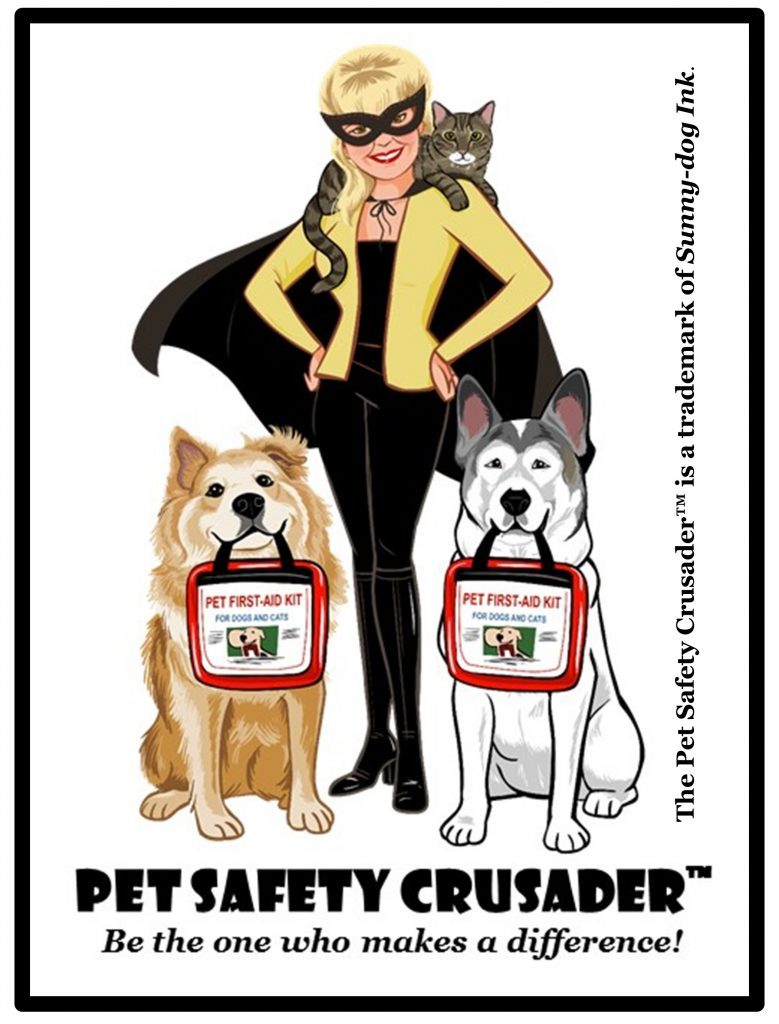Administering Pet first Aid should never be considered a substitute for treatment by a licensed veterinarian, but being informed on Pet First Aid when your experiences an emergency could save your pet’s life. Always keep your safety in mind when administering first aid to your pet.
Fractures
Broken bones are extremely painful. Before handling your pet, place muzzle on your pet to prevent them from unintentionally biting you. Carefully move your pet to a flat surface, taking care to not cause further to the fractured bone. Avoid placing a splint as improperly placed splints can do more harm than good. Before leaving, call your veterinarian to alert them that you are on your way. When transporting your pet, be sure to use a stretcher, board or a blanket sling to move the pet. Secure your pet to the stretcher without placing pressure on the fracture or on your pet’s chest by simply laying a blanket over them. Remember, keep calm and drive safely to the veterinarian for care.
Toxins or Poisons
If your pet has ingested a toxic or poisonous substance, immediately call your veterinarian, local emergency clinic or the Animal Poison Control Center. The Animal Poison Control center is available 24 hours a day, 365 days a year. There is a consultation fee for the call. Their phone number is (888) 426-4435. Be sure to collect the names or the actual items your pet ingested in a bag and take them with you to the veterinary clinic. It is important to not induce vomiting unless you have been directed to do so by a veterinarian or the Animal Poison Control Center, as with some subtances, vomiting can worsen your pet’s condition.
Choking
Many pet owners do not know how a pet exhibits signs of choking. Most often, when a pet is choking it will paw at their mouth, will have difficulty breathing, may cough or make hacking sounds or may have blue lips and tongue. If your pet can still breath and their airway is only partially obstructed immediately call your veterinarian and let them know you are on your way, then drive calmly to the veterinary clinic. During transportation is it important to keep your pet calm. If your pet is unable to breathe and has a full airway obstruction, removing the object will be necessary. First, open your pet’s mouth and look inside. If you can locate the object, try to carefully remove it using your fingers, tweezers, or pliers. It is important that you do not lodge the object further down your pet’s throat. If you are unable to successfully remove the object, transport your pet immediately to the closest veterinary clinic.
Seizures
If your pet is having a seizure it is important to keep the area around them clear of furniture and objects that they may injure themselves on. Refrain from holding your pet down or from trying to get them to stop seizing. Timing the seizure will help your veterinarian later. Most seizures last 2-3 minutes. After the pet has stopped seizing, keep them calm, comfortable and warm. Call your veterinarian to alert them you are on your way. Take note if your pet has any additional seizure activity on the way to the veterinary office.
External Bleeding
If your pet is injured and is heavily bleeding, first place muzzle on your pet. Open wounds can be painful and your pet may bite. Second, locate the area where the blood is coming from and apply pressure on the area with a clean towel. Apply pressure to the wound for at least 3 minutes to allow blood clots to form Do not remove the towel, as that can remove any blood clots that have formed and restart the bleeding. If the blood is soaking through the towel add additional layers of towels on top of the soaked through towels. Call your veterinarian to alert them you are on your way and drive safely to the clinic. Severe blood loss can be life-threatening, so immediate medical treatment by a veterinarian must be sought.
Burns
If your pet has suffered a burn first, it is important to extinguish any remaining flames before administering pet first aid. After all the flames are out, flush the burned area with large amounts of cool water. If cool water is not available you can place cold compresses on the affected area. While cooling the burn, do NOT break open any blisters that have formed. After flushing with cool water loosely cover the burn with a clean towel and prepare your pet for transport. Butter and ointment can cause an infection, so do NOT place them on the burn.
Having the phone numbers of your veterinarian and local animal emergency clinic handy is always a good idea. A pet first aid kit at home is a must. The American Veterinary Medical Association has pet First aid supplies checklist on their website. You can find it by clicking here. You can help save your pet’s life by becoming pet first aid trained through Pet Tech which offers classes locally or online through Pet Pro Hero. Remember to stay calm and driving safely while transporting your pet to the veterinarian!
Written by Julie Gajewski. Julie has been pet sitting and working in the veterinary industry as both a Veterinary Technician and veterinary hospital administrator since 1997. She founded her pet sitting company, Fuzzy Friends Pet Care, at the young age of 16. She was nominated as one of Pet Sitters International’s Top 5 Pet Sitters in 2016 and is a Certified Professional Pet Sitter through Pet Sitters International. She is a pet business consultant and a guest blog writer for pet sitters across the world. She lives in Florida with her husband and furry children, 2 Pugs and 4 cats.



















Speak Your Mind